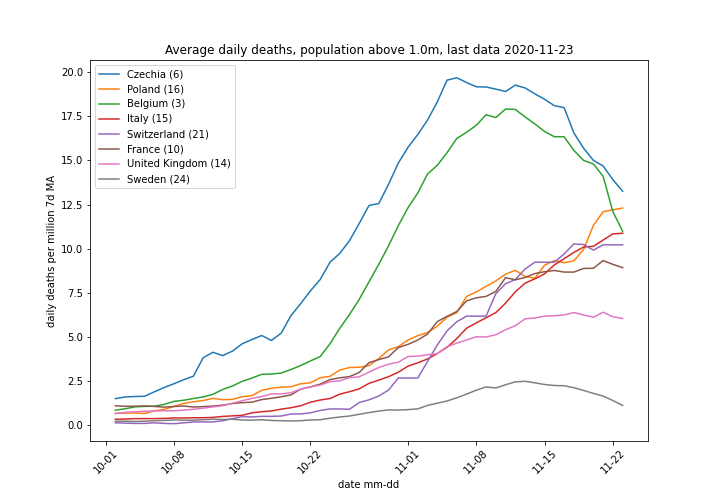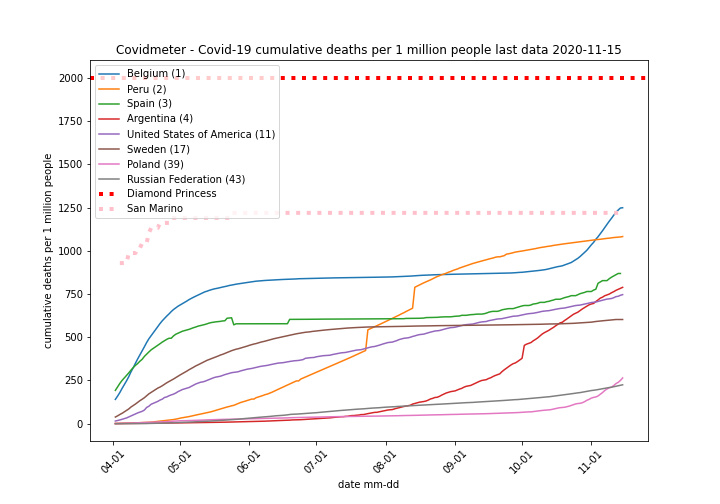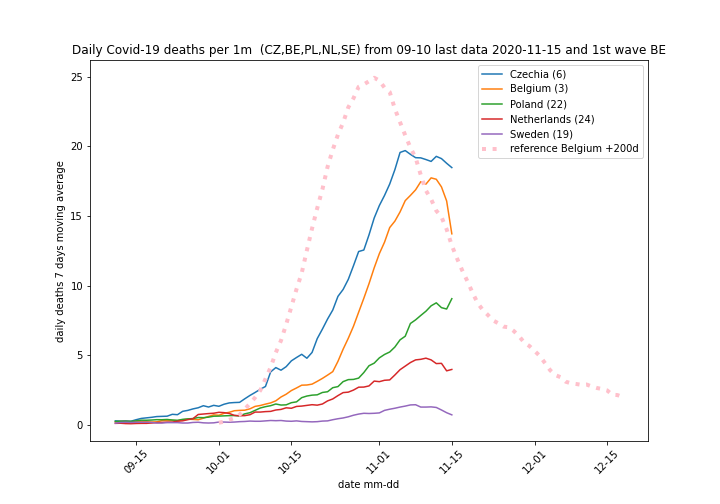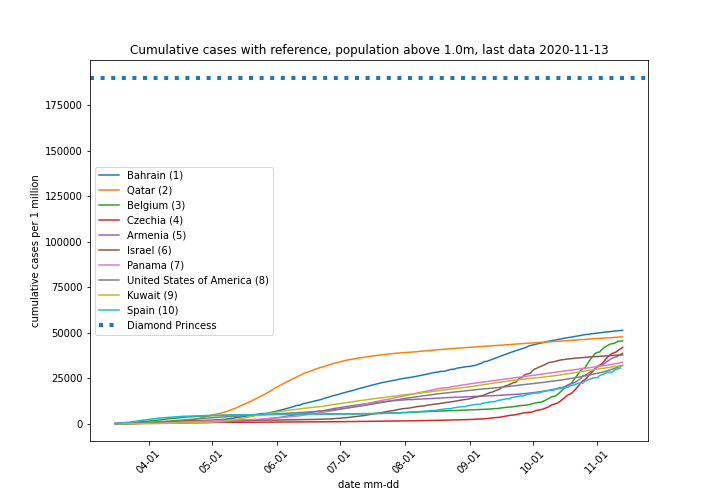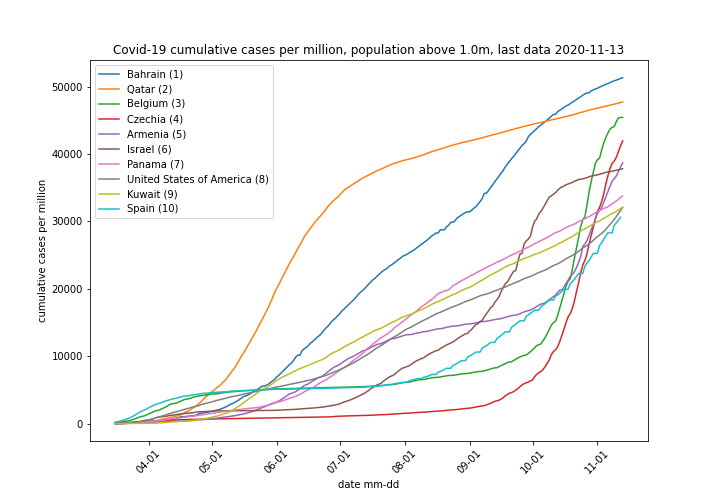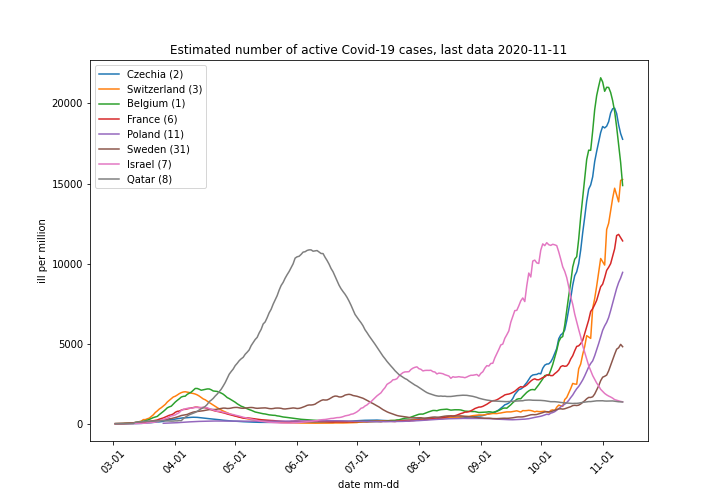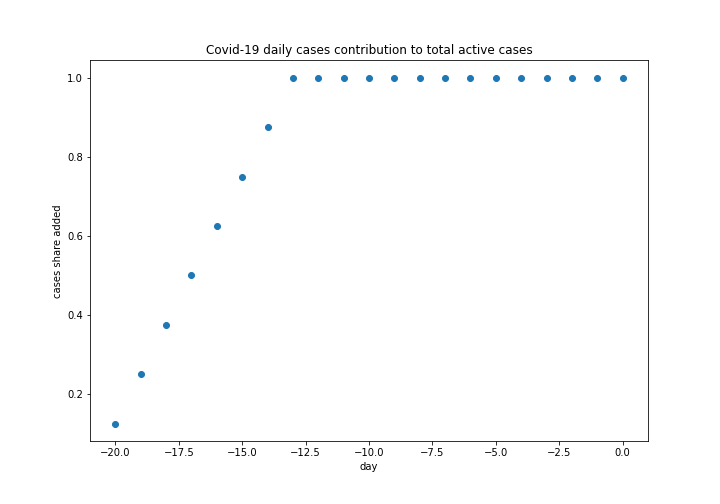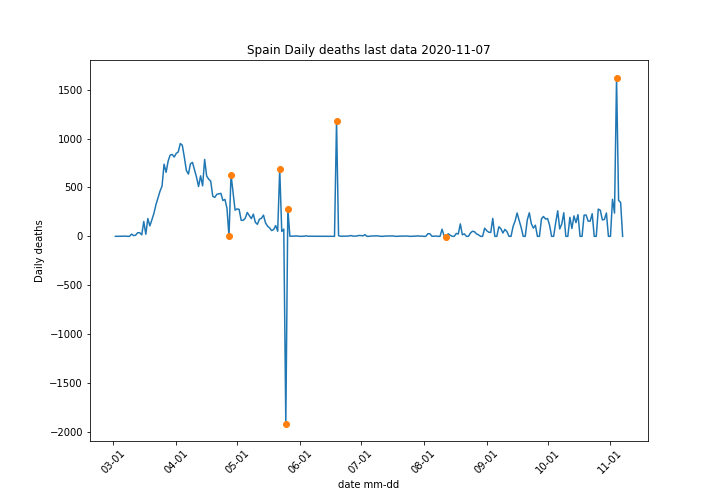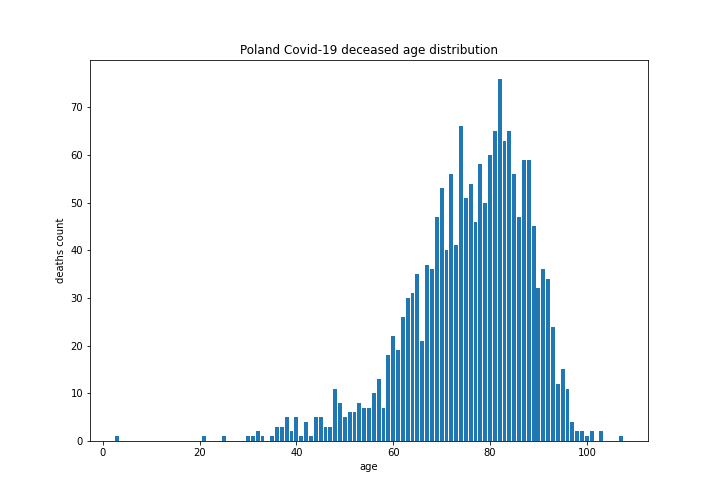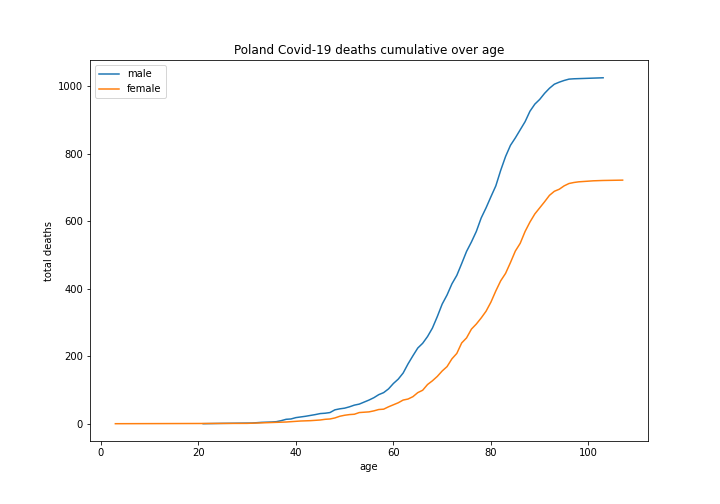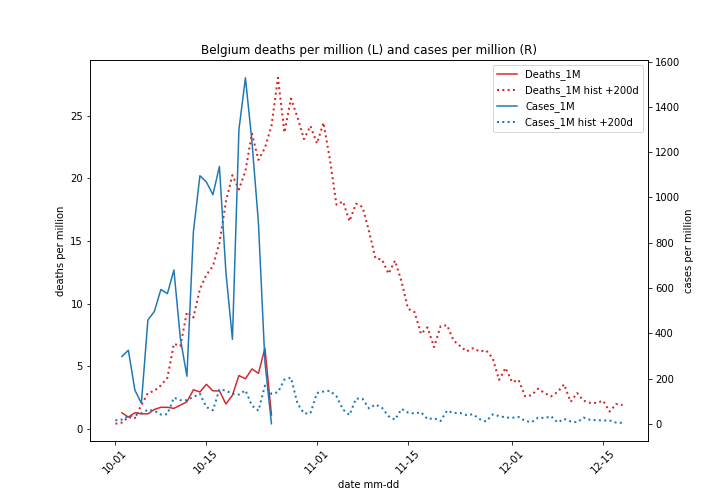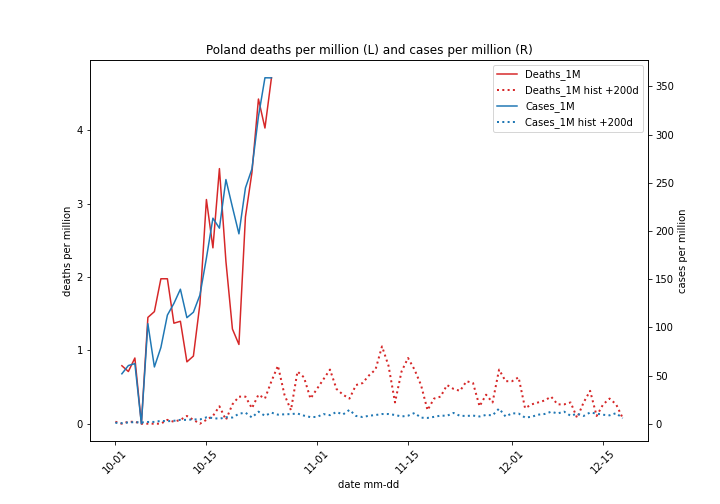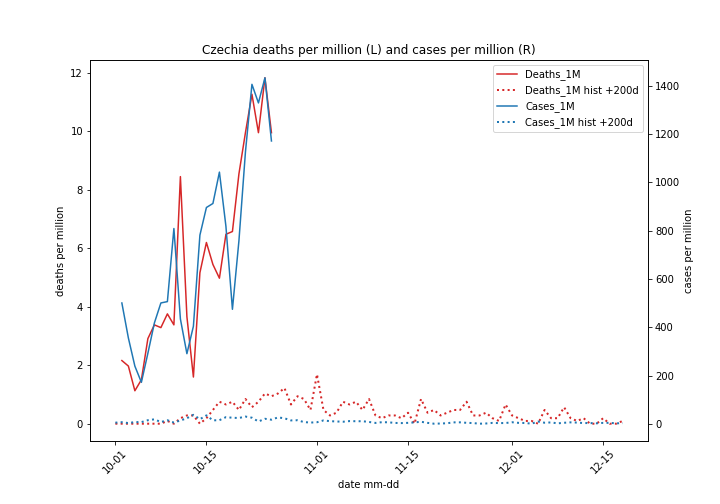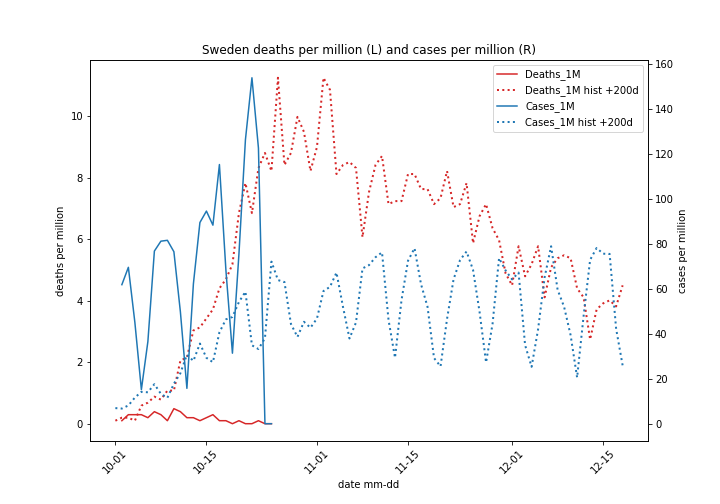Covid-19 2nd wave finally hit San Marino, a long serving estimate of cumulative deaths ceiling. First death of 2nd wave in San Marino occurred 2020-11-19 there were 9 fatalities since, last one reported 13th Dec. For reference 1st wave death toll at San Marino was 42, Douglas Adams fans should recognize importance of this number. ECDC data set issued 14th Dec is the final daily update, from now on they switch to weekly reporting. I liked this source of data despite of its flaws, since it integrated many country sources. I have no idea why they have decided to change established reporting schedule. Updated Covidmeter chart below.

- North Macedonia made 4th place and death count is growing quite rapidly. The country has area similar to Belgium and around 2 millions inhabitants.
- Poland dashed past Russia and is chasing Sweden, let’s hope it will fail in this particular race.
- Russia has adopted Sweden like approach before 2nd wave, there is no lock down, however government advertises high hygiene standards and social distancing. So far this policy is paying off.
- Sweden approach works, there are casualties but countries with chaotic lock down policies take higher toll. Of course no lock down makes a nice target for political opposition – you gamble with people lives. However past experience shows the gamble was worth taking. Swedish government is free to use this argument for its defense.
Figure below compares Covid-19 1st wave in Belgium (200 days ago, dotted line) with current figures. As we can see no country made past 1st wave Belgium peak and 2 wave peak seems to have passed.

Netherlands (red line) compared to Belgium (green) had much lower death rate than nearby Belgium. They had lighter lock down policy, as BBC claims face masks were mandated only on 1st of Dec 2020, official policy here. I am not sure if face masks are mandatory outdoors, I was amused masks are not required “while swimming in a swimming pool”. This regulation indicates swimming pools are still open. Dutch experience shows face mask does no magic, however there is a pressure to enforce one so other governments don’t look stupid. In general there is a lack of analysis of what really works and why “compensated” with abundance of pressure to implement restrictions for the sake of public good.

